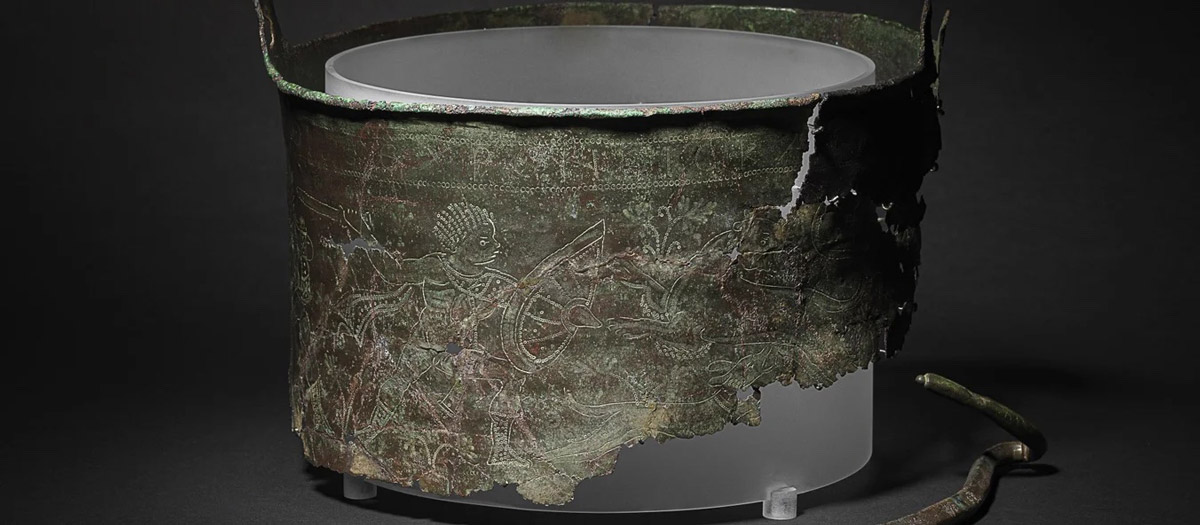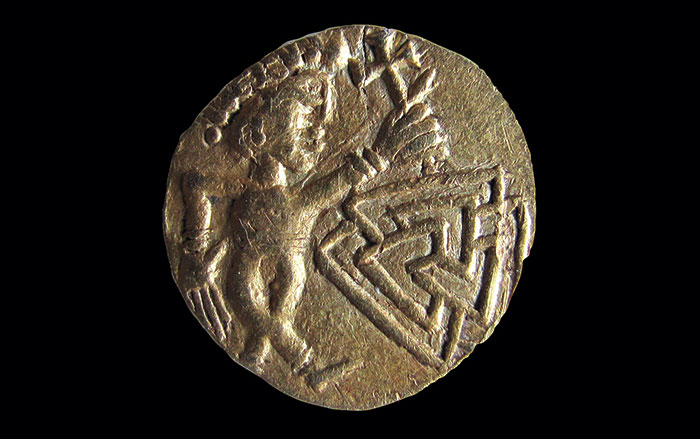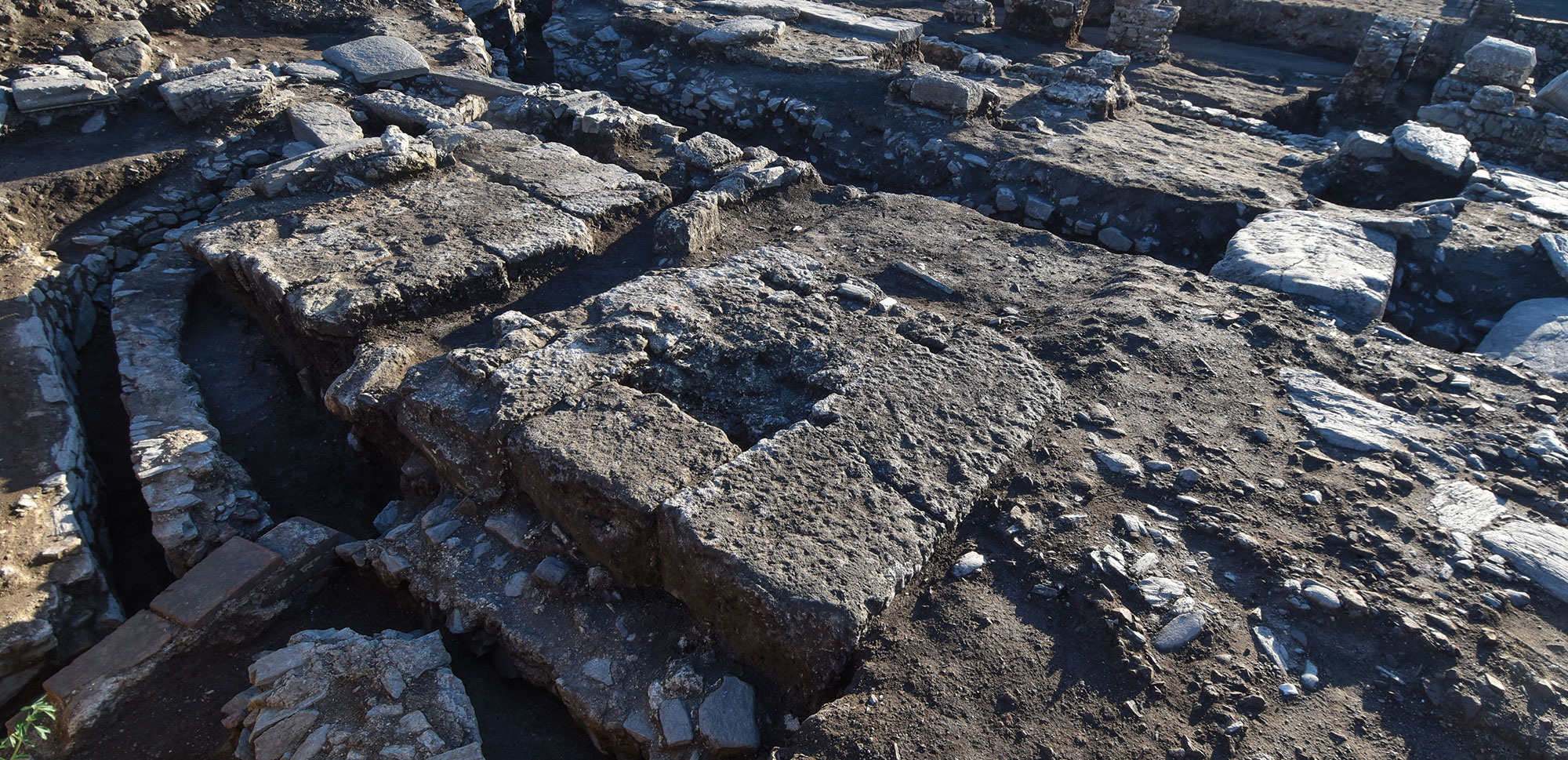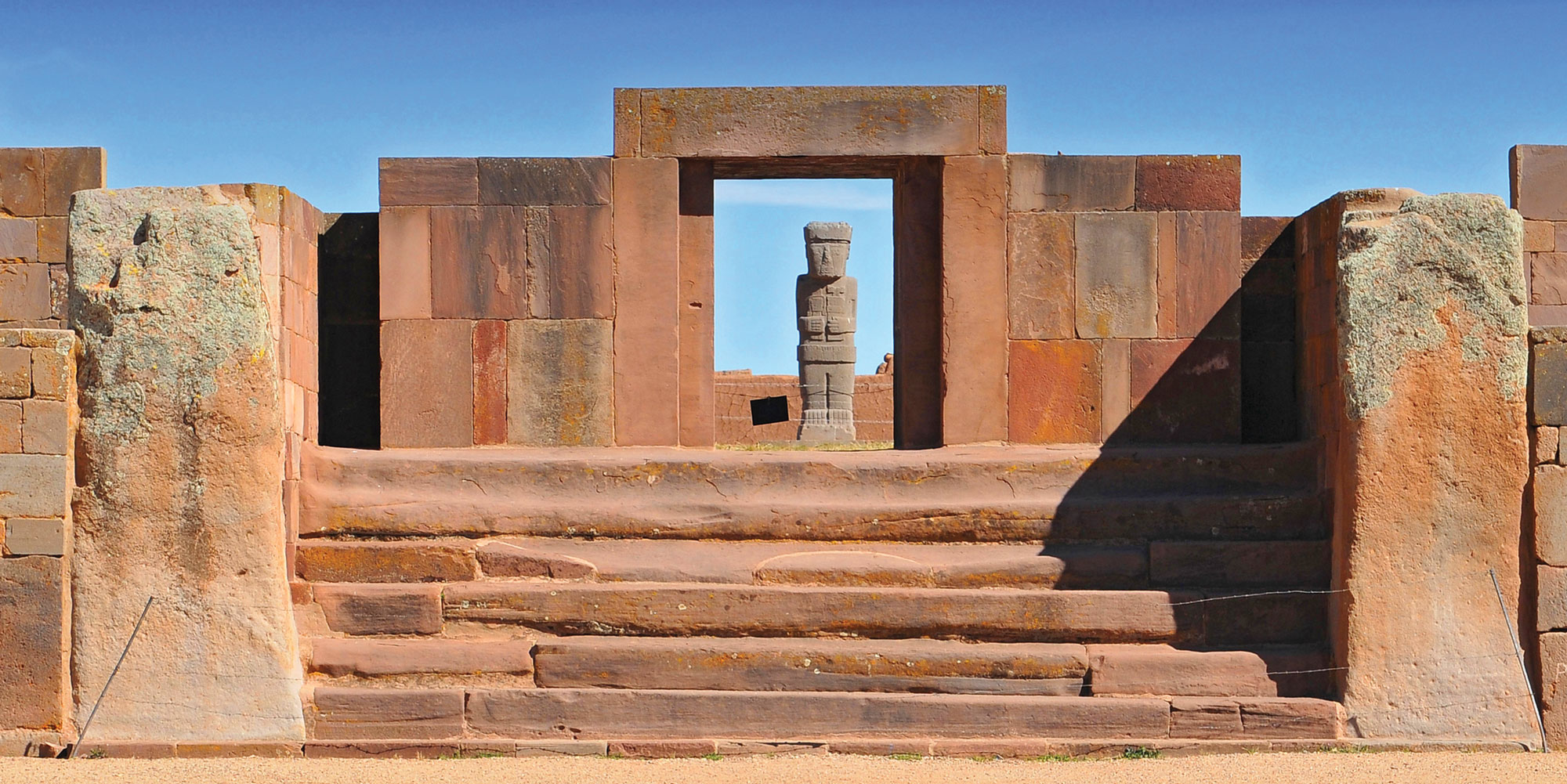SUFFOLK, ENGLAND—Live Science reports that missing pieces of the Bromeswell Bucket have been unearthed at Sutton Hoo by a team of researchers and volunteers from the National Trust, FAS Heritage, and Time Team. A complex made up of 18 burial mounds in southeastern England, Sutton Hoo is best known for the discovery of a 1,400-year-old Anglo-Saxon ship burial in 1939. Pieces of the Bromeswell Bucket were first uncovered during an excavation at the site in 1986. The copper-alloy vessel is thought to have been made in Antioch some 1,500 years ago. Decorated with a North African hunting scene and a Greek inscription reading, “Use this in good health, Master Count, for many happy years,” the Bromeswell Bucket may have been a diplomatic gift from the Byzantine Empire. The newly unearthed fragments were confirmed to be parts of the original find through X-ray fluorescence, which confirmed that all of the pieces were made of the same materials. “Thanks to closer inspection, we now believe that the bucket had been previously damaged and then repaired,” said archaeologist Angus Wainwright of the National Trust. “In-depth analysis of the metals suggests it might even have been soldered back together.” To read more about discoveries made at Sutton Hoo, go to "The Ongoing Saga of Sutton Hoo."












